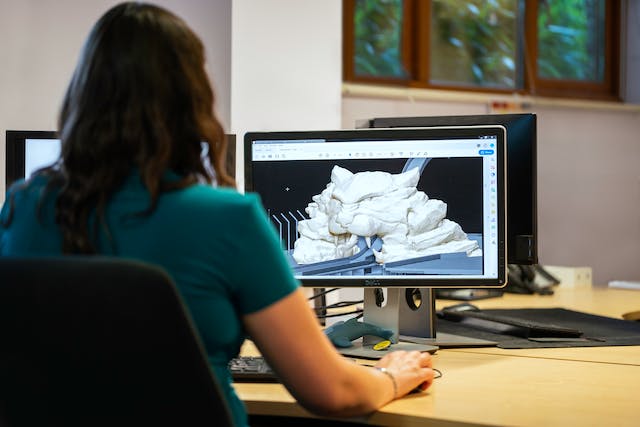Structural Design & Advanced Modeling Software for Advanced Structural Design
“Embodying excellence, our top-tier construction design seamlessly integrates visionary aesthetics with precision engineering, creating spaces that redefine architectural standards and stand as testaments to innovation and craftsmanship.”
What We Do
General Contracting
Building Construction
Design & Analysis
Construction Consultant
Specialty Works
Project Management
Structural Design
Structural design is an important aspect of the construction process, encompassing the meticulous planning and engineering required to create stable, safe, and resilient structures. It entails a thorough examination of materials, loads, and environmental factors to determine the best configuration of beams, columns, foundations, and other components. Structural engineers use advanced technologies and mathematical models to ensure that buildings and infrastructure not only meet regulatory standards but also withstand various forces such as gravity, wind, and seismic activity. The art of structural design necessitates a delicate balance of functionality, aesthetics, and safety, with the ultimate goal of creating long-lasting and efficient structures that contribute to the built environment.
Key Factors in Structural Design:
- Loads
- Material Selection
- Building Codes and Regulations
- Functional Requirements
- Site Conditions
- Foundation Design
- Structural System
- Connections Design
- Seismic Design
- Wind Analysis and Design
- Economic Considerations
- Sustainability
- Aesthetics
- Future Expansion and Modifications
- Construction Methods and Feasibility
- Life-Cycle Analysis
Primary parts of Structural Design:
Loads Analysis:
Identifying and analyzing the various loads that a structure will be subjected to, such as dead loads (permanent, static), live loads (temporary, variable), wind loads, seismic loads, and other environmental forces.
Material Selection:
Choosing appropriate construction materials based on their strength, durability, and suitability for the project’s specific needs.
Foundation Design:
Creating a foundation system that will support the entire structure while also transferring loads to the underlying soil or rock. This includes thinking about soil bearing capacity and settlement.
Structural Elements:
Based on the load analysis and material properties, primary structural elements such as beams, columns, slabs, and walls are designed.
Connections Design:
Ensuring proper and efficient connections between structural elements, considering factors like shear forces, bending moments, and torsion.
Seismic Design:
Incorporating seismic force resistance measures, which entails designing structures to withstand earthquakes and ensuring that they meet seismic code requirements.
Wind Analysis and Design:
Evaluating the impact of wind on the structure and designing components to withstand wind forces, including wind direction, speed, and building shape considerations.
Structural Modeling:
Using structural analysis software, engineers create a detailed mathematical model of the structure that allows them to simulate and analyze its behavior under various conditions.
Code Compliance:
Assuring that the structural design complies with local building codes and regulations in order to meet safety standards and obtain required approvals.
Deflection and Serviceability:
Evaluating deflection limits and ensuring that the structure meets serviceability requirements while taking occupant comfort and functionality into account.
Review and Quality Assurance:
Conducting thorough reviews of the structural design to identify and correct any errors or oversights, ensuring the highest level of quality and safety.
These elements work together to form a comprehensive structural design process that aims to create resilient, efficient, and safe structures in a variety of construction projects.
Advanced Structural Design
The application of sophisticated engineering principles, technologies, and methodologies to create innovative, efficient, and resilient structures is referred to as advanced structural design. This approach goes beyond basic structural analysis by utilizing cutting-edge tools and techniques to address complex design challenges.


Advanced Modeling Software
Advanced modeling software for structural design is an essential component of modern engineering and construction practices. Engineers can use structural engineering software to create detailed digital models of a building or infrastructure, allowing for comprehensive analysis and simulation of its behavior under various conditions.